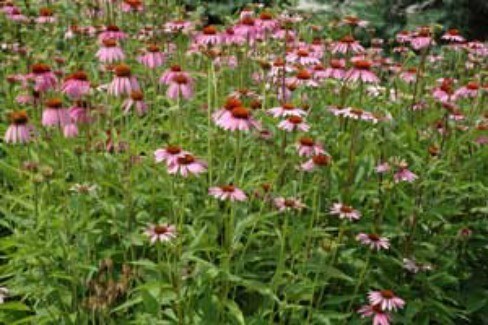

| Botanical Name: | Echinacea purpurea |
| Life Cycle: | perennial |
| Planting Time: | spring or fall |
| Height: | 2' to 4' |
| Exposure: | full sun or light shade |
| Soil: | average to rich, well-drained soil; drought tolerant |
| Hardiness: | zones 3 to 9 |
| Bloom Time: | mid summer to fall |
| Flower: | pink, rose, purplish pink and white |
| Foliage: | green |
| Propagation: | seeds and division (fall or spring) |
| Suggested Use: | beds, borders and mass plantings |
| Growing Hints: | Sow seeds in pots. Set the pots outside over winter or cold treat them for a month before moving them to a warm place to germinate. Transplant them in spring after soil becomes workable and danger of frost has passed. Water them regularly (take care not to over water) and remove spent blooms for the best show of flowers. Young seedlings are appealing to rabbits and should be protected. Coneflowers attract butterflies and leaving a few spent flower heads remaining in the garden will be much appreciates by backyard birds. |
| Interesting Facts: | Coneflower is often sold by its botanical name, Echinacea, for its ability to boost the immune system. |
Add your voice! Click below to comment. ThriftyFun is powered by your wisdom!
My absolute favorite flower. The finches also love the seed heads which gives my thistle feeders a break for a while!
Add your voice! Click below to comment. ThriftyFun is powered by your wisdom!